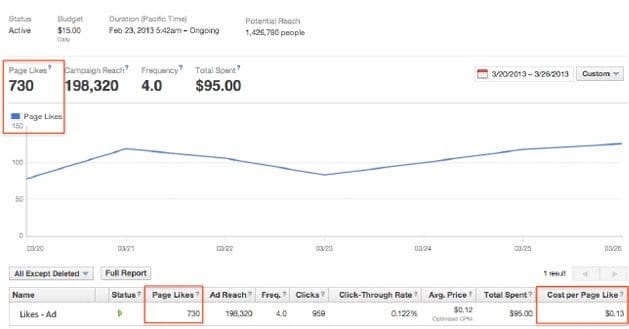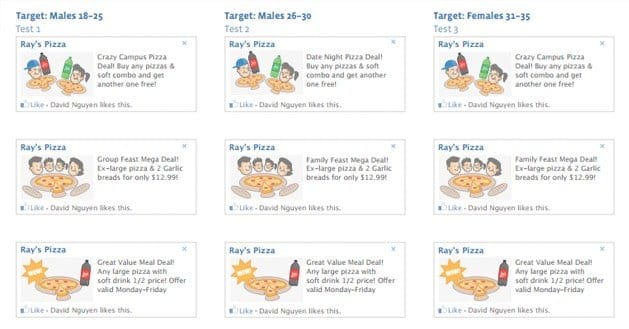 Written by ContentPowered.com
Written by ContentPowered.com
I’ll admit, this title is a little bit clickbait. I’m not advocating literally hacking the Facebook ads system. That’s likely to get you banned from the program, removed from Facebook, and possibly prosecuted. Don’t do that.
I’m also not advocating getting penny clicks out of Facebook ads. That’s been done before, and it doesn’t have very good results. It’s great if all you want is a lot of people from Bangladesh viewing your site or following your page, but there’s little reason to want those people following you if you can’t sell to them.
The purpose of this post is to give you tips and tricks – growth hacks, if you will – to allow you to get higher quality visitors at cheaper rates.
Step 1: Know Your Audience
Knowing your audience means you can target them more effectively. This may have the side effect of slightly raising your cost per click, but don’t be alarmed; a slightly higher CPC is fine when you’re doubling your conversion rate. You’ll be making more in profits so you can afford the slightly higher budget. Besides, it’s not always going to increase your costs; you might be cutting out a segment of people who both don’t convert and cost a lot to reach.
- Learn their location. This is easiest with local businesses, because you can assume most of your fans will be locals. For online businesses, try to narrow down to country or region, if possible. Always avoid targeting developing nations or countries you can’t sell in.
- Age won’t be a huge determining factor, but you should know it anyways. Figure out where the majority of your users fall and target your most focused ads at those age ranges. If you find you have two spikes, one lower and one higher, you can take advantage of narrowly targeting the younger segment with pop culture while excluding the older segment who might not get it.
- Gender is important for some businesses, but not for others. If you’re specifically selling gendered products, target it. If not, don’t.
- Other demographics, like educational level, income level, family size and such are useful for some businesses but are generally minor enough you won’t need to worry about them.
Targeting strategy: Competitors. Facebook has a type of targeting called connection targeting. You can use this to target anyone connected to a given page or entity on Facebook. One great strategy is to target specifically those people connected to your competitor’s page. You can create messages specifically designed to poach fans, with reasonable success.
Targeting strategy: Yourself. Jon Loomer is a big proponent of this strategy. He has found that the majority of his sales come from people who already follow him, even when he uses lookalike audiences. Targeting ads at the people who follow you is also a good way to circumvent low organic reach.
Targeting strategy: Lookalikes. A lookalike audience is an audience that shares demographic and interest categories with the people who already follow you, or with the people who are on your mailing list, or another custom audience. Run ads targeted at lookalikes to get them to follow your page, then target your followers with more sales-oriented ads.
Step 2: Make a Better Ad
The other factor in lowering your costs and increasing your conversions is your ad itself. Your image, your title, your copy, your URL when you’re linking off-site; it all matters.
Your title should follow many of the same rules as a Tweet or a blog post title. It needs to be short, snappy, and attention-grabbing. How you do this is up to you, and it somewhat depends on your audience and the persona you’re targeting with your ad.
Image is both the easiest and hardest part of an ad. It’s not difficult to find an attractive and compelling image, but there are a lot of factors that go into making one successful. Contrasting colors, a pleasant emotion, a subject doing something related to your ad offer, etc. You also need to make sure you’re not breaking Facebook’s 20% text rule, which is fickle but can get your ad rejected when it’s otherwise perfect.
As for your copy, you need to front-load your value. Why would a user want to click your ad? What do they get out of it?
AdEspresso also recommends putting in a bit of social proof. With one sentence, tell people what they get out of your offer. With the next, tell them they’re joining X number of others, so they can be assured that your deal is valid.
Make sure to put in a call to action, of course. Some Facebook ads allow a CTA button of some sort, while others make you put it in the copy and have no special link. A good call to action gives users a goal when they reach your landing page. Ideally, they won’t even waste time reading your landing page; they’ll just immediately fill out your form.
In ad formats that have more copy, such as the news feed ad, you have space to appeal to both the rational and emotional sides of your users. You can make emotional appeals by proclaiming your personal benefits, like having more time and being more relaxed. You can do this with the emotional tinge of your image as well. As for rational, you should address common fears, like mentioning your money-back guarantee and your great features.
Step 3: Test and Iterate
The greatest marketers don’t just run an ad; they run many ads. Where you see one ad, a marketer sees four different images they’re testing, three different headlines, a different landing page, and different targeting.
The key to successful testing is to make valid comparisons. Whenever you test two variations on an ad, make sure everything about them is the same except for one change. If you change your image, don’t also change your copy or landing page. If you change your copy, make sure your image is the same. If you change your targeting, don’t change your copy or image.
When you strike on an ad that has a higher conversion rate and a lower cost than the rest of the pack, use it as the basis for further testing. This process keeps your ads fresh while maximizing the play of each aspect.




